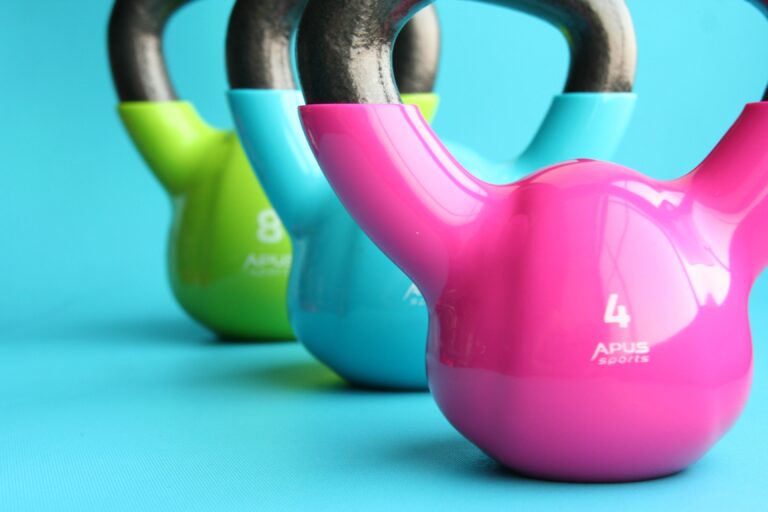A Comprehensive Guide to Fitness, Health, and Weight Los
Shed Those Pounds: A Comprehensive Guide to Fitness, Health, and Weight Loss

Introduction
Losing weight and achieving a healthier lifestyle isn’t just about appearance—it’s about improving overall well-being. If you’re seeking a way to shed those extra pounds, incorporating a holistic approach to fitness, health, and weight loss is key. Here’s a comprehensive guide to help you on this transformative journey.
Understanding the Basics
Healthy Eating: Begin by reassessing your dietary habits. Focus on consuming nutrient-dense foods such as fruits, vegetables, lean proteins, and whole grains. Avoid processed foods and excessive sugars. Portion control is also vital in managing calorie intake.
Physical Activity: Regular exercise is crucial. Incorporate a mix of cardio, strength training, and flexibility exercises into your routine. Aim for at least 150 minutes of moderate aerobic activity or 75 minutes of vigorous activity per week, along with strength training exercises at least twice a week.
Lifestyle Changes for Weight Loss
Set Realistic Goals: Establish achievable targets. Break down larger goals into smaller, manageable steps to maintain motivation.
Consistency is Key: Consistency in diet and exercise routines is fundamental. Small, sustainable changes over time lead to lasting results.
Adequate Sleep: Aim for 7-9 hours of quality sleep each night. Poor sleep can disrupt hormone levels related to hunger and satiety, potentially leading to weight gain.
Mindful Practices
Mindful Eating: Pay attention to hunger cues and eat slowly. This allows you to savor your food and recognize when you’re full, preventing overeating.
Stress Management: Chronic stress can contribute to weight gain. Practice stress-relief techniques such as meditation, yoga, or deep breathing exercises to manage stress levels effectively.

Seeking Professional Guidance
Consulting a healthcare professional or a certified fitness trainer can provide personalized guidance. They can help create a tailored diet plan and exercise routine suitable for your body and health goals.
Tracking Progress
Keep a Journal: Record your daily food intake, exercise routine, and emotions related to your progress. Tracking your journey can provide insights and keep you motivated.
Celebrate Milestones
Acknowledging achievements, no matter how small, can reinforce positive behavior. Celebrate milestones such as reaching a certain weight or consistently following your exercise regimen.
Final Thoughts
Remember, weight loss is a gradual process that requires patience and dedication. Embrace a healthy lifestyle rather than focusing solely on the numbers on the scale. By incorporating balanced nutrition, regular exercise, and mindful practices, you’ll not only shed those pounds but also embark on a journey towards improved overall health and well-being.
Images can be strategically placed throughout the guide to complement the content. For instance, demonstrating workout routines, showcasing healthy meals, and displaying motivational transformations would make sense to engage and inspire readers visually.
By following these steps and staying committed to a healthier lifestyle, achieving your weight loss goals becomes an attainable and rewarding endeavor.
Healthy Eating:
Healthy eating is the cornerstone of a balanced lifestyle and effective weight management. It involves consuming a variety of nutrient-rich foods in appropriate portions to support overall health and well-being. Here’s a breakdown of what healthy eating entails:
Nutrient-Dense Foods:
1. Fruits and Vegetables: These are packed with essential vitamins, minerals, and antioxidants. Aim to include a variety of colorful fruits and vegetables in your diet as they offer different nutrients.
2. Whole Grains: Opt for whole grains like brown rice, quinoa, whole wheat bread, and oats. They contain more fiber, which aids in digestion and helps you feel full for longer periods.
3. Lean Proteins: Include lean sources of protein such as poultry, fish, tofu, legumes, and nuts. Protein is essential for muscle repair, growth, and overall body function.
4. Healthy Fats: Incorporate sources of healthy fats like avocados, olive oil, nuts, and seeds. These fats are beneficial for heart health and provide essential fatty acids.
Portion Control:
Controlling portion sizes is crucial. Even healthy foods can lead to weight gain if consumed excessively. Pay attention to recommended serving sizes and use smaller plates to manage portions effectively.
Hydration:
Water is essential for the body’s proper functioning. Aim to drink an adequate amount of water throughout the day. Sometimes, feelings of hunger can actually be a sign of dehydration, so staying hydrated can help control unnecessary snacking.
Minimize Processed Foods and Added Sugars:
Limit intake of processed foods high in added sugars, unhealthy fats, and excessive salt. These foods often lack essential nutrients and can contribute to weight gain and health issues.
Meal Planning and Preparation:
Plan your meals ahead of time to ensure they are balanced and nutritious. This can help you avoid unhealthy food choices due to convenience. Meal prepping can also save time and make it easier to stick to your healthy eating plan.
Mindful Eating:
Practice mindful eating by paying attention to hunger cues and eating slowly. This helps you recognize when you’re full, preventing overeating.
Physical Activity:
Physical activity is a crucial component of a healthy lifestyle and plays a vital role in weight management. It encompasses any bodily movement that requires energy expenditure, ranging from structured exercise routines to daily activities. Here’s a breakdown of what physical activity entails:
Types of Physical Activity:
1. Cardiovascular Exercise (Aerobic Activity): This type of exercise gets your heart rate up and increases your breathing. It includes activities like brisk walking, running, cycling, swimming, dancing, and aerobics. Aim for at least 150 minutes of moderate-intensity aerobic exercise per week.
2. Strength Training (Resistance Exercise): This involves working your muscles against resistance to build strength. Examples include weightlifting, bodyweight exercises (like push-ups and squats), and using resistance bands. Incorporate strength training exercises at least two days a week.
3. Flexibility and Balance Exercises: Activities that improve flexibility, balance, and coordination are also essential. Yoga, tai chi, and stretching exercises can help enhance flexibility and reduce the risk of injury.
Benefits of Physical Activity:
1. Weight Management: Regular physical activity helps burn calories, aiding in weight loss or weight maintenance when combined with a balanced diet.
2. Improved Health: It reduces the risk of chronic diseases like heart disease, diabetes, and certain cancers. Physical activity also enhances cardiovascular health, strengthens bones, and boosts the immune system.
3. Mental Health Benefits: Exercise is known to improve mood, reduce stress, and boost mental well-being. It can also aid in better sleep and cognitive function.
Finding the Right Routine:
1. Start Slowly: If you’re new to exercise, begin with low-impact activities and gradually increase intensity as your fitness improves.
2. Mix it Up: Variety is key. Incorporate different types of exercises to target various muscle groups and keep workouts interesting.
3. Listen to Your Body: Pay attention to how your body feels during and after exercise. If something causes pain or discomfort, adjust your routine or seek guidance from a fitness professional.
Conclusion
In conclusion, achieving weight loss and overall wellness involves a holistic approach that combines healthy eating habits with regular physical activity. This comprehensive guide emphasizes the importance of adopting a balanced lifestyle to shed pounds effectively while promoting optimal health.
By focusing on healthy eating, individuals can nourish their bodies with nutrient-dense foods like fruits, vegetables, lean proteins, whole grains, and healthy fats. Portion control, hydration, and mindful eating habits play pivotal roles in maintaining a nutritious diet.
Simultaneously, engaging in regular physical activity is vital. Incorporating a mix of cardiovascular exercises, strength training, flexibility, and balance activities not only aids in weight management but also enhances overall fitness, reduces the risk of chronic diseases, and improves mental well-being.
The guide encourages starting with achievable goals, maintaining consistency, seeking professional guidance if needed, and tracking progress. It emphasizes the significance of celebrating milestones and adopting a positive mindset throughout the weight loss journey.
Strategic placement of images illustrating healthy meals, portion sizes, workout routines, and before-and-after transformations can enhance the guide’s effectiveness, providing visual reinforcement and motivation for readers.
Remember, weight loss is a gradual process that requires patience, commitment, and lifestyle changes. Embracing a balanced diet, regular exercise, and mindfulness not only helps shed pounds but also fosters a healthier, happier, and more energetic life.
By following the principles outlined in this guide and making sustainable changes, individuals can embark on a transformative journey towards achieving their weight loss goals and experiencing a profound improvement in their overall health and well-being.






